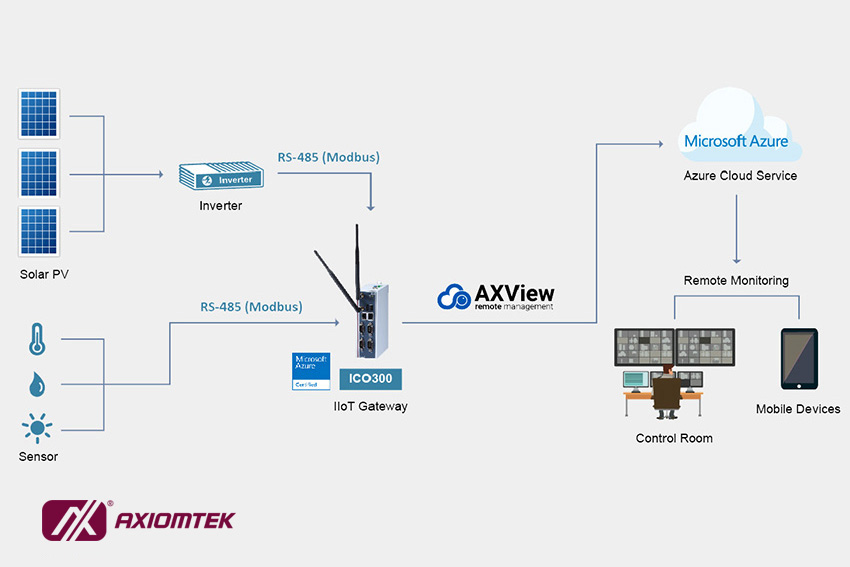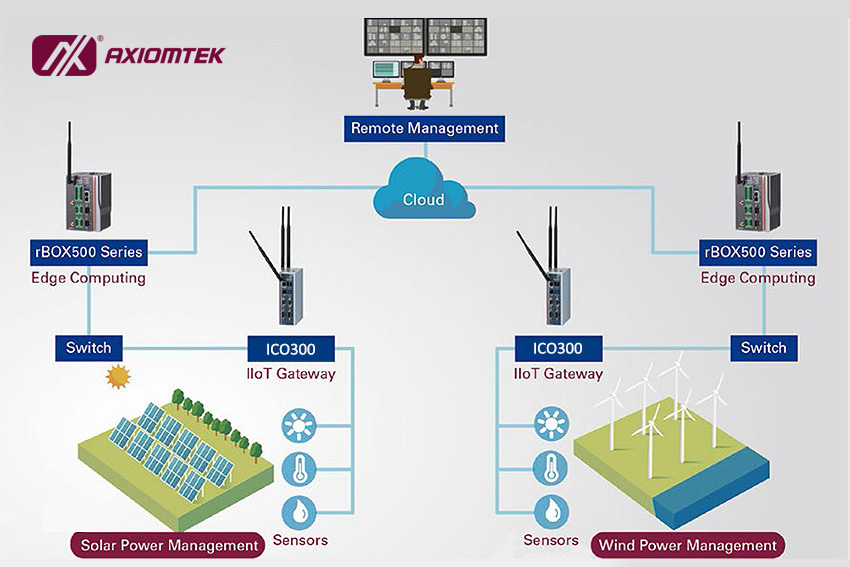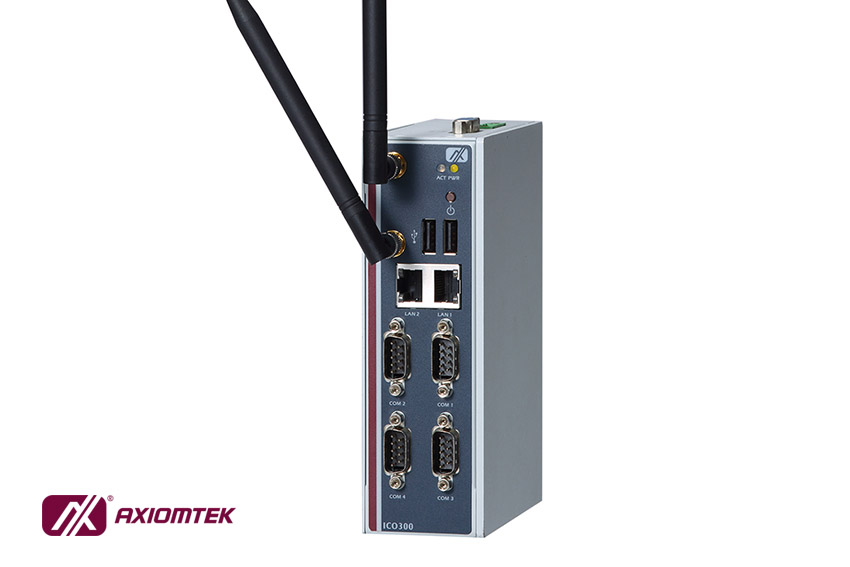In view of the growing need to commercialize solar energy, Axiomtek has deployed ICO300, its embedded system, and AXView, its own proprietary software, to form the brain of an intelligent gateway. Shown in Diagram is the architecture of a solution for a solar energy station, including the front end at a solar station, an Axiomtek’s intelligent controlling unit in the middle (including hardware and software), and a cloud at the far end.
At the front end, ambient solar panels are grouped together as a solar PV array before connected to PV inverters which then convert the variable direct current (DC) output of a solar PV array into the alternating current (AC) that can be fed into commercial electrical grid or used by a local network. Through RS-485 interface, the ICO300 gateway is connected to PV inverters via Modbus protocol, while the AXView on the brain of a solar station is collecting data, such as voltage, current, sunlight intensity, temperature and humidity, which then is sent to the Microsoft Azure cloud at the far end via 3G or Wi-Fi for display or analytics.
Solution Overview
A solar energy gateway kit can securely utilize sensors and meters, leveraging digital controls and analytics for better monitoring and management of energy and information.
• Low power ICO300 Gateway
• Visual dashboard for users
• Centralized management
• Data storage at the cloud
Benefit
• Reduce labor and inspection cost with remote data monitoring and analysis to observe
on-site situations from anywhere
• All figures and data can be viewed on the web at anytime from anywhere to help grasp
on-site situations, thus reducing the cost for labor patrol and inspection;
• All analyses are illustrated in the format of diagrams to help predictive maintenance, thus
reducing the incidence of abnormal events
• Shorten time-to-response in the case of abnormal events, with all year-round (24/7)
monitoring and alarm system
Feature Highlights
Communication - easy to communicate with other devices
• Protocol: Modbus
• Communication interfaces: RS-485, RJ-45, Wi-Fi, 3/4G
Monitoring - automatic gathering and logging system status
• Manageability
• Devices (e.g. watchdog timer, sensor) to monitor CPU, power, temperature, etc.
• Hardware event-log
• Notification for beginning and end of power generation
• Remote I/O commands
• Diagnostic analytics report
• Frequency for data collection – every 10 minutes
• Inverter, gateway and server alarming via email
Cloud integration - seamless accessibility to Microsoft Azure cloud
• Microsoft Azure suite
• Microsoft SQL Server/MySQL support
• Business intelligence reporting
Security
• Watchdog timer ensuring normal operation
• Operating authentication by User ID
• Intact for the latest 500 records during disconnection
Remote control - through remote I/O commands
• API available at the remote side to send commands
• API available at the client side to receive commands
• Remote I/O commands are to be customized case by case
Embedded Application Programming Interface (EAPI)
• Windows API library contains information about hardware, BIOS, voltage, temperature,
fan speed, WDT, DIO, etc.
System requirements - recommended
• OS: Windows® 7 or above
• CPU: Intel® Atom™ processor E3815 or above
• Storage: 16GB or above
• Memory: 4GB or above
Analytics - visual dashboard of user friendly
• Compare incident data and history data
• Efficient calculation
• Diagrammatic presentation of analytical information
Hardware Platforms
• ICO-Serials with Isolated COM Port (Other platforms to be requested)
Hardware Platforms Inverters - only inverters supporting Modbus are used
• Delta RPI H3 and RPI H5
• Other inverters may be supported upon requested


